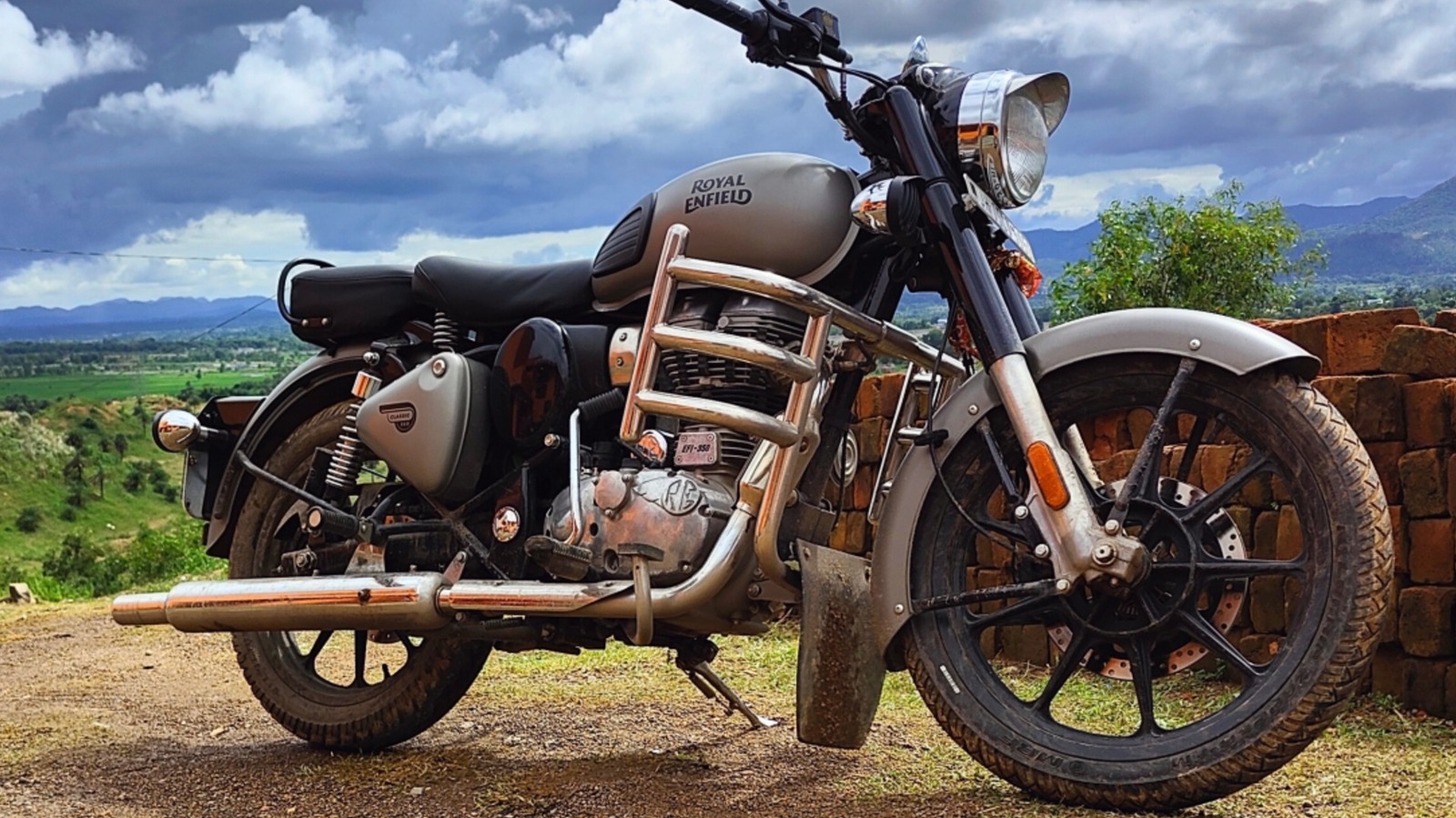
Only those who have ridden a motorcycle truly know how enjoyable the experience can be. It is hard to convey, and there is nothing like it. Regardless, every day, more people want to join the legion of bikers and learn for themselves the joy of riding. But once you know, you know. There is a certain feeling of freedom that comes with being more connected to the road and more immersed in your surroundings rather than just being inside your car. It is also something that never gets old.
For everyone experienced with motorcycles of any kind, there was a first ride on some kind of machine. For most, this was probably a good experience, but for others, it was terrifying and possibly even painful. It is important to know what you are getting into and do it right to ensure your safety. Likewise, it is also good to know where to begin, and that is why I have compiled a list of what I think are 13 of the safest motorcycles for beginners.
As someone who has ridden and repaired all kinds of motorcycles for decades, I will be the first to tell you there is inherent danger to riding motorcycles. Therefore, you automatically assume a level of risk just by choosing to ride. However, you can limit risk by wearing protective gear and never riding without a helmet. But perhaps more importantly, defensive riding is paramount. Always be aware of your surroundings and know your limits. Do not take chances and jeopardize your safety and well-being.
The bike you choose as a novice can help you develop good riding habits that will allow you to grow as a rider. Keeping the power output low is probably the best idea. You can learn how to ride and master skills, pushing modest power to its limits before graduating to bigger and faster machines. Therefore, these bikes were chosen as good beginner platforms that are easy to manage and develop the skills to become a safe rider ready for larger and more powerful machines.
While some may think of them as a separate type of two-wheeler, scooters are essentially motorcycles underneath. Modern scooters offer automatic transmissions, and the step-through design and the smaller size make them attractive options to novices. Personally, I recommend the Buddy 125 from the Genuine Scooter Company.
Imported from Taiwan, the Buddy is built to Genuine’s specifications by PGO, allowing them to offer high-quality machines in stylish colors unique to the American market. The buddy is a modern automatic scooter capable of going about 60 mph while offering predictable handling and stability. They are comfortable to ride with lively acceleration that will keep up with traffic without overwhelming novice riders.
I once managed a scooter dealer that carried Genuine Scooters, and my experience with the Buddy is that it is extremely well-built and as reliable as it gets, but as a niche product, information about it is somewhat lacking online. However, it does represent a good value as you can pick one up for around $3,000 brand new. Stylish and unassuming, a Buddy is easy to learn to ride while remaining a blast for long-time riders. I know because I own one and it starts every time.
Motorcycles and other products made in China — and come from fully Chinese companies — often come with a bad reputation even before a single model is sold. A scourge of cheaply made and poorly built scooters and motorcycles from the 2000s mostly earned them that reputation, but CFMoto set itself apart by focusing on quality and delivering reliability from the start.
For novice riders who want a little more than a 250 without being overwhelmed with power, CFMoto offers a stylish cruiser called the 450 CL-C. Its 449cc parallel twin is water-cooled and fuel-injected, producing a modest 40 horsepower and offering a low seat height. However, it does not skimp on features. J. Juan brakes with ABS handle stopping while an analog speedometer houses a TFT display in its center.
I sold CFMoto scooters when they first arrived in the States and found them to be of surprisingly good quality despite their country of origin. I now own a 2005 CFMoto 150 that sat for a decade and only needed fresh gas to revive it, and it hasn’t had a problem since. Considering this and a retail price of around $6,000, the 450 CL-C certainly deserves consideration.
Founded in 1894, Royal Enfield has evolved over more than a century of manufacturing, from being an arms supplier to the British military to now being one of the biggest motorcycle manufacturers in India. Just like its home country, Enfield’s ties to Britain are purely historical, although it continues to produce motorcycles styled much like those from the past. That heritage is exemplified in the Royal Enfield Bullet 350, in production since 1932.
Although the Bullet began life in the ’30s, the modern version only resembles the original in broad strokes. The technology and manufacturing of the current model are both thoroughly modern affairs. What you get with this classic look is a 350cc single-cylinder fuel-injected SOHC with around 20 horsepower. It is simple and basic but not wholly unsophisticated, and an improved seat design is said to provide extra comfort.
Meant to handle the treacherous road conditions of India, the Bullet is a robust machine that is also relatively small, light, and nimble, making it easy to pick up and navigate busy city streets. For under $5,000, it is a solid choice.
Produced from 2012 to 2017, Kawasaki’s Ninja 300 provided riders an entry into the sportbike world that did not skimp on the sport. It was the long-overdue replacement for the Ninja 250, the teenager’s bike of choice for nearly a generation. I have ridden probably a dozen of them over the years, and they were decent but unremarkable riding experiences. More recently, I took a 300 out on a state highway, and it turned out to be surprisingly good.
When Kawasaki upgraded to the 300, it did so in a big way, providing fuel injection, an actually good sport suspension, and modern sportbike styling with a top speed approaching 100 mph. But even if you are not trying to find its straight-line top speed — beginning riders should never try this — it performs well in the corners, something new riders absolutely should practice.
Today, a Ninja 300 can be had for around $3,000 to $4,000, and anyone aspiring to someday ride the legendary 1.3-liter Suzuki Hayabusa would do well to acquaint themselves with sportbike riding on a used junior Ninja.
Whether you know it or not, you have likely seen Triumph motorcycles on screen in The Wild One, The Great Escape, and, more recently, The Walking Dead. Triumph is an iconic brand with a proud British tradition, and while a classic Bonneville 650 or a modern Thruxton RS are both attractive ways to get around, they may also prove to be a bit much for the novice. For the beginning rider who seeks the vintage aesthetic and can afford European design, Triumph has its Speed 400.
Developed in conjunction with Indian motorcycle manufacturer Bajaj to allow Triumph to tap into South Asian markets, the Speed 400 delivers a lot in a smaller package. With a liquid-cooled 398cc single-cylinder engine, the 400 delivers a modest 40 horsepower. However, big singles, often called “thumpers” for their punchy and low exhaust note, make power at lower revs and usually deliver generous torque. This can be beneficial to new riders who won’t have to make the engine scream at high rpm to squeeze out power, and can take off with well-balanced power delivery.
Being a premium brand, you should expect to pay more for a Triumph. The good news about the Speed 400 is its pricing at just over $5,000, making it an affordable option with much higher-priced looks.
The Kymco People 150 hails from a land of scooters, where the per capita ridership is higher than anywhere else in the world, Taiwan. Kymco, its biggest scooter manufacturer, builds a broad range of scooters of excellent quality but not always excellent names, such as Like, Yogurt, Dollar, or Many.
I say all this because I rode a Kymco People for about a year while I managed a scooter dealer that sold Kymco models and more. And even though I had plenty of experience riding much larger and faster motorcycles at the time, the People remained a joy to ride. The 149cc single-cylinder engine provided plenty of power for city traffic, and the long and slender seat remained comfortable after a long ride. Large 16-inch wheels kept the ride smooth and stable, while the retro styling made it something appealing to look at.
The People was discontinued in favor of a model with updated styling, which I never cared for as much. But given the reliability I have come to know from Kymco products, there should be plenty of used Peoples around. And with its automatic transmission and simple controls, the People 150 will be easy to hop on and learn for most people.
Although it may be lesser-known than other established brands, KTM has been building motorcycles in Austria since 1951. KTM offers a range of bikes for dirt and street, and the 250 Duke is a unique option for first-time riders.
With aggressive and modern styling and a lot of exposed frame, the Duke looks ready to hit the track. However, with just 249cc of displacement and 31 horsepower, you will want to be careful who you challenge. And while it will be left behind by most other sportbikes on the road, it will hold its own in its class while providing plenty of excitement through some curves.
Many aspiring riders are enthralled with sportbikes. However, having 100+ horsepower on tap for your first ride will lead to almost certain tragedy, making the KTM 250 Duke a very good choice to get acquainted with the experience while looking the part, too.
So this may be a bit of a humorous and cheeky suggestion, but it has merit. A moped may be the safest choice for any beginning rider. And just to be clear, moped combines the words motor and pedal while describing what is essentially a motorized bicycle and not a scooter, which are often incorrectly called mopeds. Unfortunately, the last manufacturer of mopeds, Tomos of Slovenia, ceased production in 2018. Nonetheless, you can still find them on the used market in most places.
I took my first ride on a friend’s Puch moped, which had a 49cc two-stroke engine started by pedaling the bike and engaging the engine with a clutch. Once running, it was good for about 30 to 35 mph, which was plenty for my 12-year-old self. The advantages of a moped are the simplicity, good fuel economy, and if it breaks down, you can still pedal it home.
For many riders, their introduction to the world of motorcycle riding happens not on the street, but on the dirt. The first motorcycle I ever owned was a 1973 Hodaka Super Rat, and it provided an excellent learning experience before I could legally ride on the street. But for those already of age for a license, a dual-purpose, also sometimes called an enduro, bike is a good way to learn and take out for fun at the same time.
The Yamaha XT250 offers new riders a durable platform to learn to ride that is at home on or off the road. Its 249cc single-cylinder engine makes plenty of power while returning up to 76 mpg, making it as economical as it is fun to ride. Furthermore, the engine is proven to be reliable – and it is fuel-injected – leaving you more time to ride rather than learning how to fix your bike. It is basic with little attention paid to flashy design or added accessories like USB charging, but whether you need to commute to college or just hit the trails for no reason, the Yamaha XT250 is a great choice.
American V-Twin cruisers are known for being big and burly with loads of low-end torque and a distinctive rumble. They are also generally pretty big and heavy bikes that can quickly overwhelm inexperienced riders. And while big cruisers are its bread and butter, you may not realize how many entry-level bikes Harley-Davidson has made over the years. Far from being an anomaly, smaller bikes are very much part of its history, and one of the best starter bikes in its recent past is the Street 500.
The Street 500 found few fans among the Harley faithful, but that does not mean it was necessarily a bad bike. The 500cc Revolution X V-Twin engine, along with the bike’s styling, looked the part in every way as Harley wanted to offer something less intimidating to lure in new riders to the showroom. And taken apart from the wider Harley world, it is a decent, smaller bike that one could easily learn on before stepping up to a Fat Boy or Electra Glide. The Street 500 and its 750 cousin went away in 2021, but a used one would be a good choice for aspiring V-Twin cruiser riders.
From 1985 until 2016, the Honda Rebel 250 was the beginner bike of choice, and it did so well that Honda kept making it unchanged for 30 years. I have ridden many and found them to be mostly unremarkable for being slow and predictable, but since they were made by Honda, they were also hard to kill. But after so many years of untouched reliability, Honda reimagined its entry-level cruiser and bumped it up to a 300.
With new digs and a boost of power, the Rebel 300 is not only a reliable and attractive bike to learn on, it is also modern, including amenities such as fuel injection, LED lighting, and a rear disc brake. No longer cloning a Harley Sportster, the new Rebel has a unique look while retaining its cruiser style. And despite its many updates, pricing under $5,000 means it remains one of the more affordable options in its class.
I have spoken to many seasoned riders who believe something like a Harley Sportster with an 883cc engine is best suited for beginning riders. Likewise, I have heard sportbike riders suggest a 750cc 4-cylinder is a good place to start. Either way, I have to disagree, but some people will never buy anything under 500cc, so here is an option for the person who refuses to start small: the Suzuki SV650.
Perhaps for riders who come to the experience with a bit more maturity, the SV650 is a good choice. It has been in production for some time, meaning that plenty of used options are out there, or a new one can be had for around $7,000. And while this is about it being good for a beginner, the SV650 is lightweight and nimble, and its twin-cylinder 645cc engine produces about 70 horsepower, or more than enough to get you into trouble if you aren’t careful. Nonetheless, because of its size and weight, it would be a much safer choice than a Hayabusa for a first-time ride.
In 2014, Honda released the Grom, which cribbed its moniker from surfing lingo, and it has been a stand-out success ever since. Riding on diminutive 12-inch wheels and powered by just a 125cc engine, the Grom did not stand poised to be a sales star in the showroom from the start. But more than a decade later, the Grom is not slowing down.
With a base price of $3,599, the Grom is absolutely one of the most affordable motorcycles on the market. Although it has modern fuel injection, the engine appears to be the same utterly reliable and simple design Honda has been using for decades. Paired to a 5-speed manual gearbox, the Grom will not be the street racing champion, but it might be the most fun way you could get around downtown or cruise along the beach. And being so small, light, nimble, and basic, the Grom might be the best beginner bike ever made.



